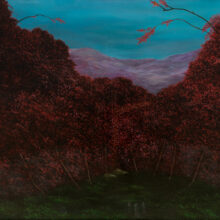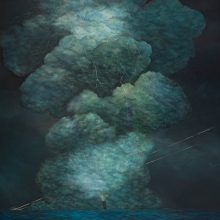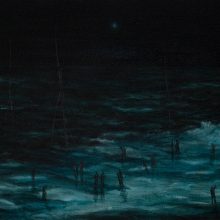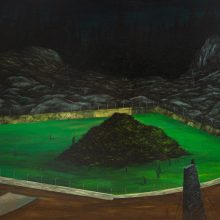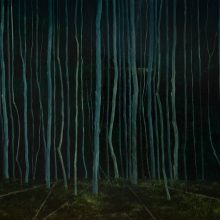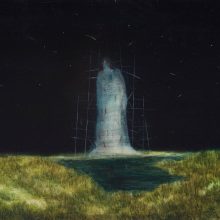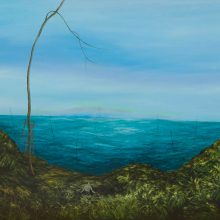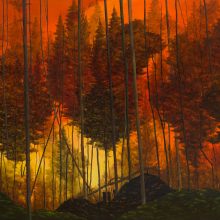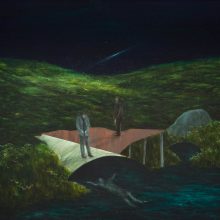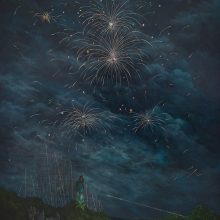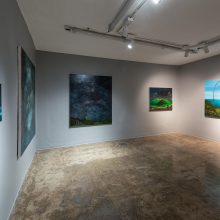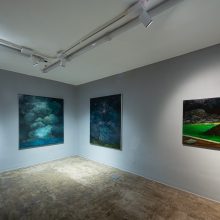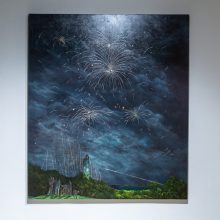Despondency
Milad Jahangiri
These visual experiments hark back to the days that have etched a painful impression on my mind. In these paintings, I have sought to reproduce a series of dreadful events. The visual idea of the paintings has their provenance in the detailed accounts of the survivors of a horrible incident; something that the victims by no means wanted to transpire. What turns the fractures and cracks into deep painful scars is how each person experienced the catastrophe.
According to Philip Gourevitch in his 1995 New Yorker article, “The Genocide in Rwanda,” a lawyer said that he escaped a few times, but eventually he gave up the struggle and waited for his death. In such accounts, we see moments in which people find themselves extremely close to inevitable death in an unknown time in the future. In this situation, one seems to be a passive observer: all he or she can do is wait—for certain death. It is the account of an incredibly painful death, the thought of which conveys a sense of despondency and desperation. They say the question that often comes to mind in such moments is, “Why am I still alive?”
In this series, the sense of helpless suffering in the face of dire circumstances is reminiscent of the days in which we find ourselves. The farther we move through these times, the more we feel ourselves plunged into bewilderment as passive observers and thus we identify ourselves with the victims as we recall their agonizing moments.
